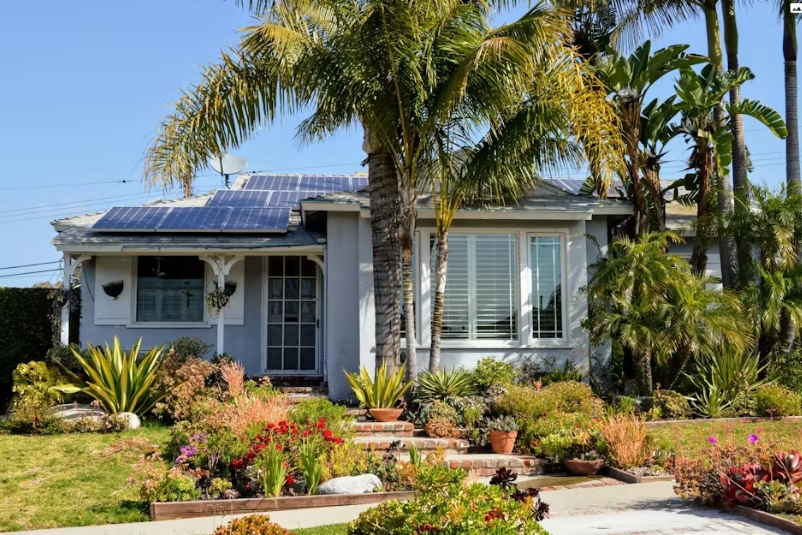
As part of the agreement, Haven Energy will provide solar and storage systems at zero-cost to 300 qualifying customers across Clean Power Alliance’s service area, which includes Los Angeles and Ventura counties.
Haven will also network the systems together, creating the Clean Power Alliance’s first virtual power plant (VPP). The VPP is expected to provide 4.8 MWh of dispatchable power, delivering over $380,000 in resource adequacy costs savings in its first three years.
“This partnership demonstrates a viable pathway to achieve energy equity and electrification at scale, creating a more resilient and sustainable future for all," said Vinnie Campo, founder and CEO of Haven Energy.
California and a handful of other states, including Illinois, Maryland, Ohio and Virginia, have authorized community choice aggregation (CCA) programs, like the one offered by Clean Power Alliance.
CCA allows local governments to procure power for their communities from an alternative supplier, while still leveraging the transmission and distribution services of the local utility. These programs often give municipalities access to cheaper and greener electricity than is offered by the incumbent utility. Nearly 43% of Clean Power Alliance's electricity comes from wind or solar resources, according to its website.
VPPs help manage peak demand
VPPs use advanced software and communication technologies to manage, optimize and coordinate the output of various types of distributed energy resources (DERs), including residential solar and storage systems. VPPs can aggregate tens, hundreds or even thousands of DERs into a single dispatchable resource that can be used to bolster the grid during times of peak demand.
VPP capacity in California could exceed 7,500 MW by 2035, according to a 2024 report from The Brattle Group and Grid Lab. The report also said that by 2035 VPPs could save the state’s consumers more than $550 million per year, avoid more than $750 million annually in traditional power system costs, ease energy challenges, improve grid reliability and advance the state’s efforts to create a sustainable and reliable energy system.
“These systems will not only provide homeowners with reliable, clean energy but also support CPA’s resource adequacy and load modification efforts,” Jeff Chapin, co-founder and Chief Product Officer of Haven Energy, said in a statement.
Ensuring energy equity and grid resilience
Funding for the solar and energy storage systems will come from the California Public Utilities Commission’s Residential Solar & Storage Equity Program, a part of the Commission’s Self-Generation Incentive Program (SGRIP). The Residential Solar & Storage Equity Program, as the name implies, provides low-income households with financial assistance for the installation of solar and energy storage technology.
The funding is a game changer for low-income communities, according to Campo. “It not only delivers clean energy and significant energy bill savings but also ensures these households are better protected against outages and rising energy costs,” he said.
“This new solar program for our lower income customers creates an affordable pathway in the transition to clean energy so any customer who wants to can contribute to making their community more sustainable and energy resilient,” Ted Bardacke, chief executive officer of CPA.
The companies say the solar and storage systems and the VPP will also make the power grid more flexible, especially in areas prone to wildfire-driven public safety power shutoffs.
The solar and storage systems and the VPP will align with the demand response requirements of the SGIP program, “ensuring these assets contribute to a more flexible and resilient energy grid," Chapin said.
Utilities embracing VPPs
Utilities are increasingly embracing VPPs as a way to manage rising demand and costs. In Texas, NRG Energy, a power generator and retail electricity provider, has partnered with Renew Home, a residential VPP operator, to create a 1-GW artificial intelligence-powered VPP.
In Utah, Rocky Mountain Power partnered with sonnen, a smart energy storage and virtual power plant technology company, and ES Solar, one of the largest solar installers in Utah, to add batteries to existing rooftop solar systems and create virtual power plants. ES Solar plans to retrofit 32,000 homes with sonnen VPP batteries over the next five years, firming 40% of all residential solar arrays in Utah.
Elsewhere in California, San Diego Gas & Electric is running a VPP pilot project to help the grid meet electricity demand when summer temperatures rise.